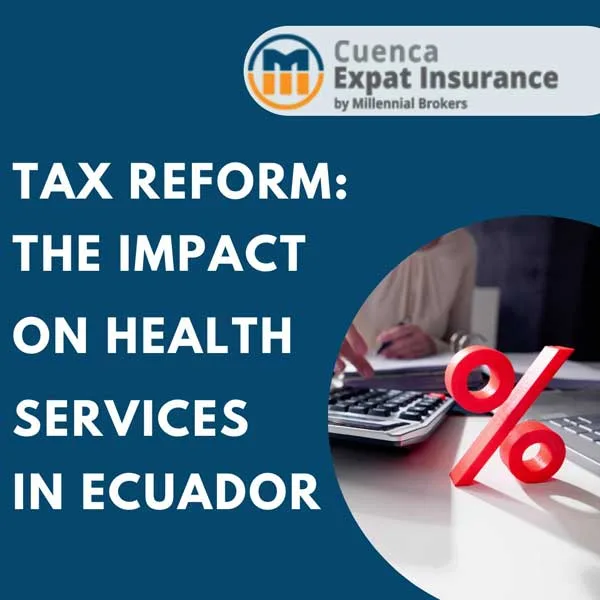Cuenca and Medellin, Colombia vie for top honors as South American expat hotspots; how do the two compare?
By Kathleen Peddicord
Editor’s note: Prospective expats scouting countries and cities hear often these days about Cuenca and Medellin, Colombia as two of the hottest South American expat destinations. Kathleen Peddicord, publisher of Live and Invest Overseas, and the author of several books about expatriating, compares Cuenca and Medellin.
Cuenca, Ecuador, and Medellin, Colombia, are two of the top retirement options in Latin America right now. Which is better? Which one might be the right place for you to think about retiring overseas? Trying to answer those questions requires drawing some comparisons.
Both of these cities enjoy great weather, with no bugs, all year. Living in either place, you wouldn’t need to use heat or air conditioning, a big help with monthly utility bills.
That said, the weather is not the same in these two cities. Medellin is warmer, with daily highs averaging around 81 degrees Fahrenheit, lows in the 60s, and minor seasonal variation. In Cuenca, monthly average highs vary from 65 to 71 degrees, depending on the time of year, and nightly lows are likewise correspondingly lower.
Medellin sees more rain (66 inches annually versus 29 inches in Cuenca). At the same time, Medellin sees more sunny days, on average, annually, than Cuenca.
Does either of those descriptions qualify as “perfect weather” for you? As with all retire overseas factors, it’s a matter of your own preferences.
Residency is fairly easy to establish in both Colombia and Ecuador, with low thresholds for visa qualification in both countries. In Colombia, the pensioner’s visa requires an income of just under $1,000 per year, while in Ecuador the level is even lower, at $800 per year. For an investor-type visa, Colombia’s options start at around $34,000, while Ecuador requires but $25,000.
Colombia’s visa, however, is quicker and easier to obtain, with fewer documents required. Also, Ecuador imposes some restrictions on your travel during your first two years of residency in that country, while Colombia imposes no such restrictions at any time.
The cultural scene in Medellin is remarkably similar to that in Cuenca… which is to say that both of these cities are culturally rich. This is surprising because, while Medellin is home to about 4 million people, there are but 600,000 living in Cuenca. Still, in both cities, you can enjoy orchestra, theater, art openings, museums, and a generally sophisticated cultural scene. You’ll pay a modest fee for most of these things in Medellin, while in Cuenca they’re usually free.
The infrastructure is good in both cities. You’ll enjoy drinkable water, reliable broadband Internet, and dependable electricity, water, and phone service.
Also, both cities are very walkable, and both boast excellent and cheap public transit systems. And, if you decide to drive, you’ll find traffic jams equally maddening in both cities.
Real estate is a tremendous bargain in both cities, cheap for the region and on a global scale. Apples to apples insofar as that’s possible (that is, comparing comparable properties in comparable regions of each city), Medellin’s El Poblado neighborhood (the best address in the city and the place where most expat retirees are settling) is the winner. On a per-square-meter basis (which is the only reliable way to compare property prices between two places), prices in El Poblado are lower than prices in the best neighborhoods of Cuenca.
Bottom line, you can buy a nice, two-bedroom apartment in both these cities for less than $100,000.
For the lifestyle you’ll enjoy in Medellin, the cost of living is a tremendous bargain. The same is true in Cuenca–for the lifestyle it offers, it, too, is a great bargain.
However, the lifestyle in one is nothing like the lifestyle in the other, which brings us to the ways these cities differ. (As Medellin is such a big and diverse city, I’ll confine my comparisons to its El Poblado neighborhood, which, again, is likely where you would want to settle if you were to retire here.)
To start, Medellin’s El Poblado offers a modern, upscale ambiance. It has elegant shopping, state-of-the-art infrastructure, attractive new buildings, and many and diverse options for dining out. New, luxury, brick high-rises look down from wooded hillsides. Tall trees line the well-maintained streets and nicely landscaped parks. And El Poblado is only one of many such desirable areas in this city.
On the other hand, Cuenca is one of the Americas’ premier Spanish-colonial cities and a UNESCO World Heritage Site. The old Cathedral was built in 1557, the architecture is well-preserved Spanish colonial, and the streets are cobblestoned. You’ll even see evidence of the Inca occupation from the early 1500s. Yet just outside the historic center, Cuenca also offers new, modern high-rises. So you can live in a modern home, yet have the historic center just a short distance away.
El Poblado is a First World environment; you’d be hard-pressed to find a U.S. city that can beat it. On the other hand, Cuenca is part of a developing country, where you see evidence of the Third World… things like sidewalks in poor repair and unmaintained structures.
Access to the United States is easier from Medellin than from Cuenca. You can fly direct to Medellin from Miami (flights are available daily), whereas you’ll need to connect (and probably spend the night) in Guayaquil or Quito when traveling to Cuenca. This adds a day to the trip coming and going, as well as the cost of lodging and taxis.
The expat community is far smaller in Medellin than in Cuenca. You can find expats in Medellin — at a local coffee shop or the Irish pub — if you look for them, but you won’t normally see your fellows around.
In Cuenca, the expat community has grown dramatically in the past few years especially. Today’s estimates put between 4,000 and 5,000 expats and foreign retirees in this city. They are making a cultural imprint. Most of their impact is positive, in my opinion, but whether an expat community of that size is a positive or a negative for you overall is, again, like all retire overseas factors, a matter of choice.
The cost of living is higher in El Poblado than in Cuenca, due in part to currency exchange rates. Ecuador uses the U.S. dollar, so dollar-holders don’t feel the pinch of a weakening currency in this country. Meantime, Colombia uses its own peso. The stronger it gets, the more dollars you need to maintain the same standard of living. Bottom line, your living costs in Medellin would be noticeably higher than in Cuenca.
That said, as I write, the U.S. dollar is at a 16-month high against the Colombian peso, making a real estate purchase in Medellin more appealing right now than ever.
A basic budget for Medellin might be $1,750 per month (food, entertainment, utilities, public transit, taxes, and HOA fees). In Cuenca, figure about $1,250 per month. Neither city is expensive, but Cuenca is definitely more affordable.
All things considered, the winner is?
There is no winner. Neither city is “better.” Manhattan is not inherently better or worse than New Orleans, say, but it’s certainly different. The same goes for Medellin and Cuenca.
I see Cuenca as an adventure, a cultural adventure. It offers a lifestyle that’s as different as you can get from the United States or Canada without leaving the world’s European-based cultures.
Medellin, on the other hand, could be perceived as a reward destination. A pretty, pleasant, comfortable place to live, a place where it’s a treat to spend time. In Medellin, you can embrace a sophisticated, elegant lifestyle, the kind of lifestyle that most retirees wouldn’t be able to afford in the United States.
Credit: Huffington Post, http://www.huffingtonpost.com; photo captions: Scenes from Cuenca and Medellin.



















